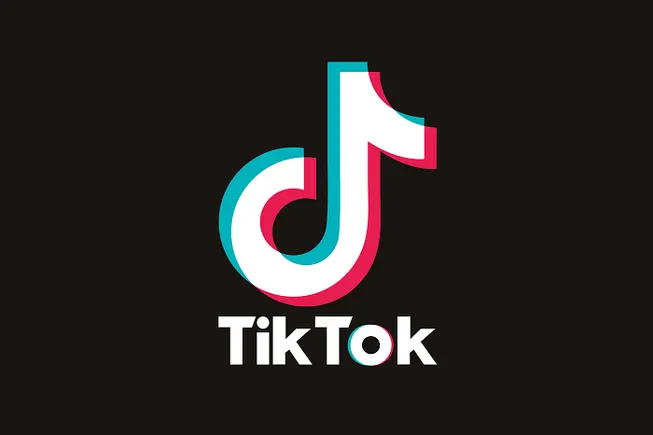Lululemon Mirror review: a reflection of at-home fitness
Mirror, mirror on my wall, are you the fittest of them all? Probably not, but it’s the uncertain future of premium fitness hardware that’s to blame. Continue reading…
/cdn.vox-cdn.com/uploads/chorus_asset/file/24551177/236580_Lululemon_Mirror_AKrales_0079.jpg)
In my living room stands a mirror. I’ve used this mirror every day for the past three months, though not always to its full potential. When I’m not staring at my reflection in it, I’ve spent an inordinate number of hours pondering where it fits in my life. It might seem odd to dedicate as many hours as I have thinking about a mirror, but this isn’t just any mirror. It’s the Mirror.
The stars hadn’t aligned for me to review the Mirror when it launched in 2018. In the roughly four and a half years since, I’ve heard many a joke (some of them funny, even) about Mirror and the out-of-touch people who have enough space and money to own a $1,500 mirror with a $39 monthly subscription. For example, one Twitter user dubbed it a “big ass iPad with Peloton-esque programming.”
But things have changed since people cracked jokes at Mirror ads on New York City subways. The pandemic sparked an at-home fitness craze. During peak lockdown cabin fever, Lululemon — purveyor of trendy yoga pants — bought Mirror for a whopping $500 million. Last year, it rebranded the product under the Lululemon banner, revamped the app, and changed the price from a flat $1,495 to a range of options from $995 to $1,895, depending on accessories.
Considering all this, I shouldn’t have been totally surprised that I ended up liking the Mirror. And yet, I was. Partly because in Mirror, I see the murky state of connected fitness staring straight at me, and it doesn’t matter so much whether this is a good product. It matters whether connected fitness hardware has a future.
It sure is a mirror, folks
Whenever I have friends and family over, someone usually asks about whatever fitness machine has taken over my living room. Not a single person asked about the Mirror because when it’s off, it looks like a regular mirror. There’s not much to say about the design other than it’s got a carbon steel frame, and (unless you wall mount it) the stand holds it about a foot off of the floor. If I squint real hard and the light hits at the right angle, I can make out the bezels of the hidden display. But you wouldn’t notice unless you knew to look.
The Mirror stands 56 inches tall, and 43 of those comprise the 1080p display. And at 22.4 inches wide, you should be able to fit it anywhere — even if you live in a cramped space. Up top, you have a 5-megapixel camera in case you want to schedule a personal training appointment. But if that creeps you out, it comes with a camera cover.
There’s a camera up top, but you can cover it Mr. Robot style with this cover.
You can wall-mount it, or you can lean it against a wall. I picked the latter because I live in a rental and reviewing fitness equipment is a never-ending game of furniture Tetris. I’ve moved mirrors myself before, and given how compact the Mirror is compared to a bike or treadmill, I figured this would be the easiest machine to move from storage and into the living room.
I was wrong. I’m a pipsqueak with noodle arms, and the Mirror weighs 70 pounds. I got about 5 inches toward the door before I abandoned my pride and called in the cavalry. It’ll be easy, I thought. Not only can my spouse open jars with ease, but they can lift our 18-pound cat without pulling a muscle. However, even with their help, we were both huffing and puffing after moving the Mirror a mere 10 feet.
Even so, this is the most space-saving fitness hardware you can fit into a smaller apartment or room. Whether it’s wall-mounted or on the stand, it’s not going to take up much space. And, unlike a stationary bike, it won’t be an unsightly eyesore if you need to take a break from working out. I would just be intentional about where you want it put on delivery day and enlist help if you need to move it. Even if you’re swole and 70 pounds isn’t a thing, it’s not so much the weight as it is the fact that it’s long and unwieldy, making it difficult to maneuver around other objects.
You can see the bezels here, but you won’t see it if you look straight on.
The only thing I don’t like is the lack of physical power or volume buttons. While that does reduce the likelihood of greasy fingerprints, you have to wake up the device by opening up the Lululemon Studio app. You also control the volume via your phone. This works out the majority of the time, but if you’re having the odd connectivity issue, it’s cumbersome to have to pull out a plug to restart (especially if your cable management setup isn’t the easiest to access).
A good way to explore new exercises
Say it with me now: the best exercise is the one that works for you. It doesn’t matter what science says the optimal workout is. What matters is finding something you genuinely enjoy. The problem is that finding that thing can be an incredibly expensive journey.
The thing I liked most about Mirror is the variety of exercises you can try from the comfort of your own living room. There’s barre, boxing, cardio, chair, competitive, dance, family fun, kettlebell, kickboxing, meditation, pilates, pre / postnatal fitness, step, strength, stretches, taichi, toning, and yoga. Most of these are what you’d expect from on-demand fitness services. But a few are Mirror-specific. Competitive, for example, lets you go head-to-head with other Lululemon Studio users to see who can maintain their heart rate zones most efficiently. Basically, you see an avatar and a points gauge so you can see who’s in the lead. Family fun consists of cardio and strength, dance, ballet, boxing, and yoga classes meant for adults to do together with children under the age of 12. Taichi is also rare to see on these platforms.
Pablo supervises all my yoga classes. He’s less interested in toning and strength classes.
Last year, the Mirror app was rebranded as Lululemon Studio. With that rebrand, members also gained access to classes from Pure Barre, Y7, Dogpound, Forward Space, Aarmy, Rumble, Yoga Six, and AKT. These are all chichi fitness boutiques that offer classes ranging from yoga, bootcamp, HIIT, dance cardio, boxing, pilates, and some formats that mix multiple modalities in a single workout. On top of access to on-demand classes, membership also gets you a 20 percent discount on in-person classes. On paper, that’s jamming a lot of value into one $39 monthly membership.
You can opt for personal training lessons as well, which range from $40 to $80 and span multiple modalities, including strength, cardio, and yoga. That’s much cheaper than what you’ll find at most gyms, but the tradeoff is you have to rely on the Mirror’s camera for correcting form. Live classes are also an option if you prefer having a schedule and don’t mind instructors calling out your handle mid-class.
I would like to fix this noodle arm situation, but I would rather run another half marathon than take most at-home strength training classes. They often cut rest periods to a mere 15-30 seconds to cram in as many moves as possible for busy people. I don’t know about you, but I’m less motivated to lift if each leg day means I’ll be waddling like a penguin for a whole week. (Severe soreness is, contrary to popular belief, not a sign of a superior workout.) The toning classes — which combine pilates, barre, strength, and cardio with high reps and low weights — seemed more up my alley. So I took a few, along with yoga and mobility stretches.
There’s no real leaderboard. You just see who else has taken the class.
While I stuck to intermediate-level classes, I wouldn’t call them easy. I felt challenged and sore the next day, but reasonably so. More importantly, I felt engaged mentally. I now know what an attitude from barre is, that pilates is the devil, and that switching between multiple similar exercise types is something my brain likes. I eventually felt empowered enough to try a few traditional strength classes and was pleasantly surprised by the manageable pace. The variety of recovery exercises was also refreshing. On top of your typical mobility stretches, there are classes to teach you proper foam rolling (also the devil). You can also choose between restorative yoga, faster-paced vinyasas, and hatha yoga.
This is a fast and convenient way to sample a lot of new exercises, at home, for less than in-person boutique pricing. It’s not going to appeal to everyone, however. While Lululemon Studio gets you a wide range of options, this is best for folks who enjoy trying lots of different things, are strapped for time, and maybe aren’t the biggest fans of group exercise. (I have yet to attend a yoga class where someone didn’t let one rip mid-downward facing dog or a boxing class where my pathetic pushups didn’t make me feel self-conscious.)
This is mostly what you get in terms of metrics. For the record, I hadn’t linked Strava yet.
Aside from the competition classes, Mirror doesn’t really tap into that gamified spirit that many other fitness platforms do. During classes, you can see a scrolling feed of other members who’ve taken the class at the bottom, but it’s not a leaderboard. There are no badges or achievement awards to collect, either. Personally, that’s refreshing because I tend to choke if I’m focusing on the two arbitrary points needed to overtake “Sweat4KFC, 45, NYC” on the leaderboard. I felt more joy focusing on the practice itself, knowing it was harder to stumble across metrics reminding me how far I am from my overly ambitious goals. That’s a huge plus for me, but perhaps a major con if you find competition motivating.
Data nerds also might not be satisfied with the workout summaries and metrics. You can connect a Bluetooth heart rate monitor or smartwatch, but all you see is your heart rate and whether you’re “in the zone.” Mirror also displays calories burned, but as I’ve written before, calories are an unreliable, wildly inaccurate metric. For gauging progress, Mirror uses a proprietary Health Score. It’s essentially a measure of how much cardio, strength, and recovery you do, but it’s more helpful as a visual. I have a Health Score of 5.3K. I don’t know if that’s good or bad, but looking at my chart, it’s evident I should focus more on strength and recovery because I’m heavily lopsided toward cardio. (Lululemon Studio links with Strava, so my runs and walks are included in my score.) I’ve known that for ages, but the visual really hammers it home.
The problem with premium hardware
Buying into at-home fitness means you run the risk of spending thousands on hardware that can be bricked if you stop paying the subscription fee or for reasons totally outside your control. After Flywheel lost a suit against Peloton, it remotely bricked its $2,000 connected stationary bikes. A few years later, some Peloton treadmill owners were incensed when the Just Run mode — which lets you use it as an ordinary treadmill — was temporarily locked behind a paywall. If the classes are the “real” product, the longevity of your hardware is directly tied to the health of the company.
With Mirror, you do get the slim consolation that it will always work as a mirror
With Mirror, you do get the slim consolation that it will always work as a mirror. Your Wi-Fi could be out, Lululemon could spontaneously combust, or you could cancel your membership. Doesn’t matter. You’ll always be able to do a ‘fit check, take mirror selfies, give yourself a pep talk, or really hone your Mulan impression by butchering Reflection by Christina Aguilera. You can’t say the same of every connected bike, rower, or treadmill.
The Mirror is intended for humans, but cat roommates can also use it to fail the mirror test.
You can, however, say the same of a regular ole floor-length mirror that costs a fraction of the price. You could also spend a much lower monthly fee for Apple Fitness Plus or app-only Peloton subscription and stick an iPad under said mirror. But if you really want to try the Mirror for yourself, there’s a blessed 30-day free trial and free returns. Whether it’s worth the trouble will really comes down to how much you like the classes.
This is the problem with only selling premium hardware. The average person doesn’t love getting sweaty and isn’t about to pay luxury prices for something they don’t love. The pandemic flipped the script by forcing everyone inside and screwing supply chains. Suddenly, people who thought these machines were ridiculously overpriced were okay with paying higher prices. In hindsight, companies got greedy, and their bet on premium hardware’s larger profit margins backfired once affordable alternatives were widely available again. They realized too late that content retains more value regardless of economic ups and downs.
No asana like savasana.
You can see it in how fitness tech companies are hurting. Peloton’s fall from grace was the most dramatic, but Lululemon didn’t emerge unscathed. Its most recent earnings were fine, but the Mirror portion of its business ain’t doing so hot. Holiday sales didn’t meet expectations, and Lululemon’s leadership hinted it was moving away from a hardware-focused business model and toward a separate digital app membership for a lower fee this summer. With the economy the way it is, I’m willing to bet more fitness companies will start heading down this route if they haven’t already.
I might’ve bought the Mirror outright in 2020
I might’ve bought the Mirror outright in 2020, but in 2023, it makes more sense for me to wait for the app-only subscription and get this $115 Amazon Choice mirror that’s bigger, taller, and about half the weight. I’m a little sad that I have to return the Mirror soon, but tempted as I am, it, unfortunately, doesn’t fit into my life as a reviewer. My jury-rigged version is not only much cheaper but affords me greater flexibility.
For all my gripes, I enjoyed using the Mirror more than I ever thought I would, and I’m glad there are more price options now than in 2018. But so long as connected fitness hardware starts at around $1,000, I can’t help but think that one day a mirror is all Mirror will be.
Agree to Continue: Lululemon Mirror
Every smart device now requires you to agree to a series of terms and conditions before you can use it — contracts that no one actually reads. It’s impossible for us to read and analyze every single one of these agreements. But we started counting exactly how many times you have to hit “agree” to use devices when we review them since these are agreements most people don’t read and definitely can’t negotiate.
To use Lululemon Mirror, you must pair it with an iPhone or Android smartphone. That includes the phone’s Terms of Service, privacy policy, and any other permissions you grant. You must download the Lululemon Studio app to use the Mirror, which may require you to grant additional permissions, such as access to the camera. If you choose to use your Lululemon Studio membership to take virtual or in-person classes at partner studios, you also agree to their terms and privacy policies. If you choose to integrate with third-party apps like Strava, you also agree to that app’s terms and privacy policies for health data.
By setting up Lululemon Mirror, you’re agreeing to:
Final Tally: Two mandatory agreements and several optional agreements

 Astrong
Astrong 































